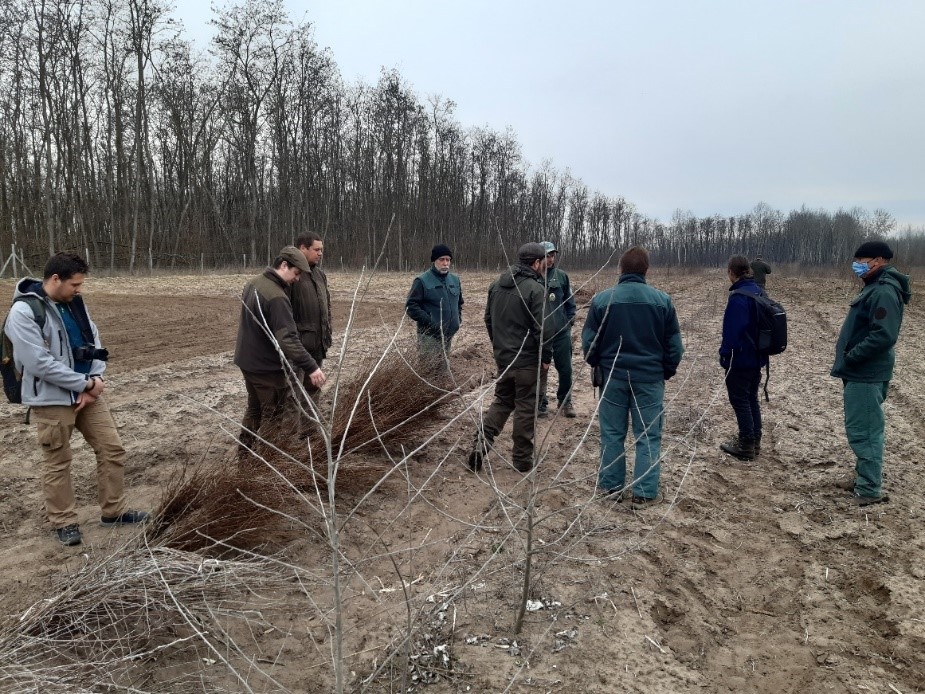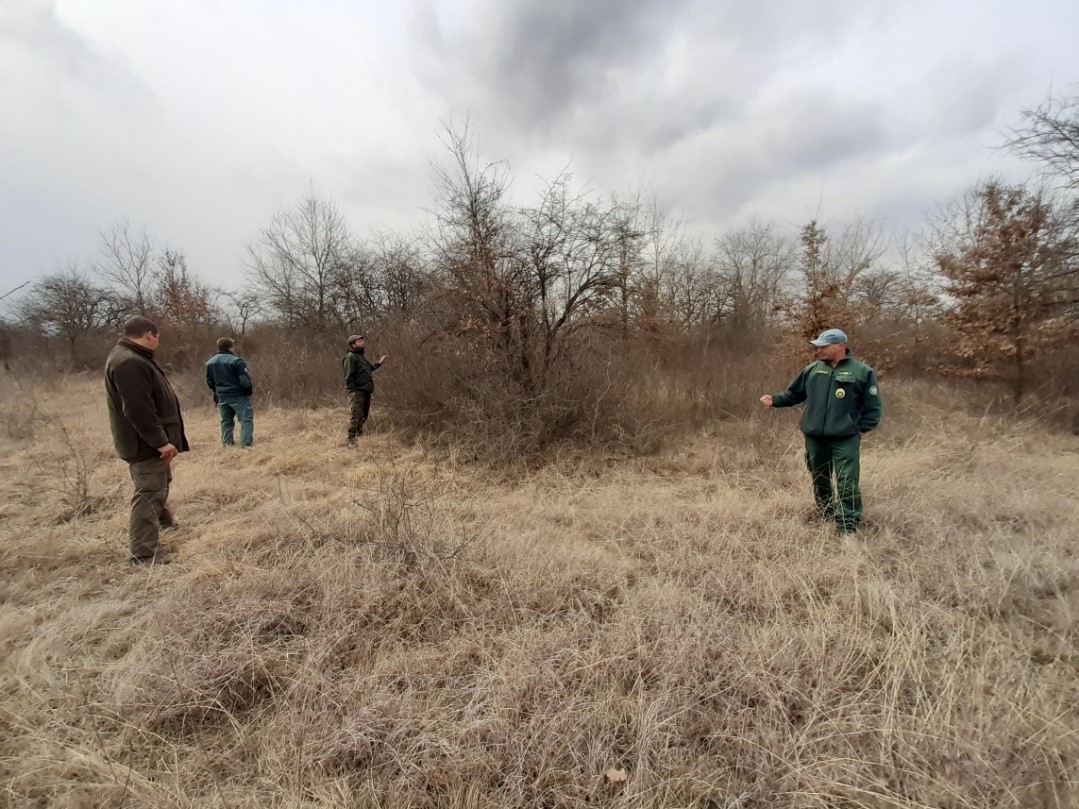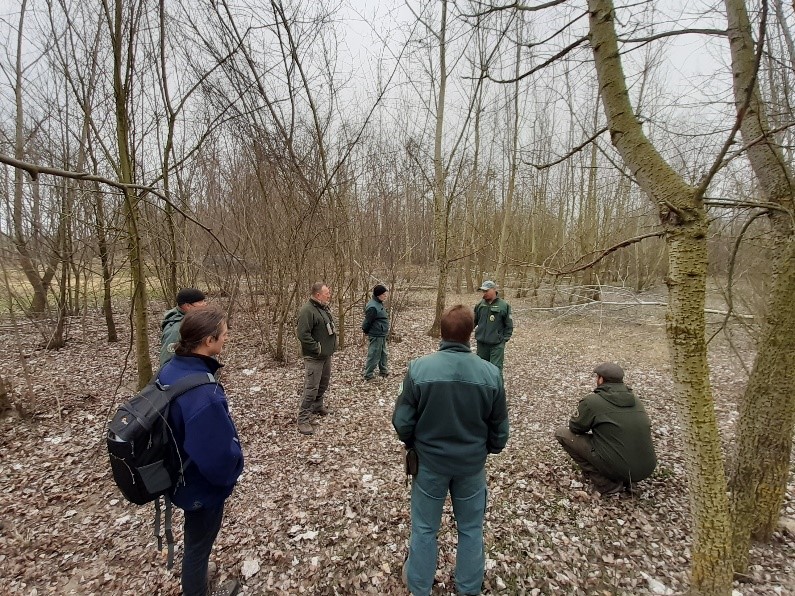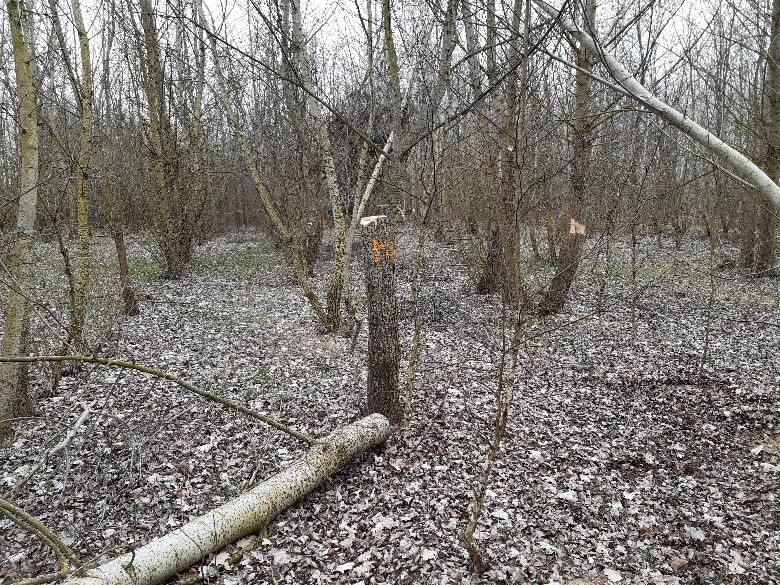09/03/2021. Budapest by Péter Koncz
The LIFE4OakForests and the OakeyLIFE projects (http://oakeylife.hu/) are two complementary projects to restore oak forests. The OakeyLIFE is focusing on the forests in the lowlands. To know more about the aims, activities and results of the OakeyLIFE project the experts of DINPD visited its sites in Kunpeszér (Peszéri Forest Natura 2000 area) on the 5th of March 2021.
The goals of the OakeyLIFE project:
• to suppress the invasive species on NATURA 2000 areas,
• to increase the extent and improve the nature conservation status of key community habitat types (subcontinental peripannon shrubs, Pannonian sand grasslands, Euro-Siberian forest-steppe oaks),
• to enhance the conservation status and to increase the population size of plant and invertebrate species of Community interest via habitat management and planting ex situ raised organs,
• to restore key ecosystem services provided by the calcareous sand forest steppe habitat complex,
• to raise public awareness (the public’s understanding) about the importance of these ecosystem functions provided by this habitat complex,
• to formulate physically tested, calibrated technological recommendations for land managers and authorities for promoting sustainable management of these habitats and use of ecosystem services of those.
Visited interventions
Construction of native forests and glades applying a large variety of species
We visited an area where the invasive Robinia pseudoacacia was removed and 16 different native species was planted to restore mixed oak forests (Fig. 1). Within the forest small glades are also planned. On the glades site-specific seeds were sowed collected in the nearby grasslands. Around 50 types of seeds were used. The aim is to create species-rich grassland patches with the dominance of Festuca species and forest edges with blackthorn in the future forest (Figure 2).


Completed reforestation
We also visited a reforestation site completed 11 years ago. In this site the reforestation was also performed with 16 species, but dominated with poplar trees. It was nice to see that in this forest they experimentally applied the conservation management treatments of the LIFE4OakForests project! It was due to the previous visit of Csaba Vadász in the project sites of the DINPD (Diósjenő, Fóti-Somlyó). They introduced interventions included e.g. the creation of micro-habitats for xylophagous insects (Figure 3)!
Natural regeneration of Euro-siberian steppic woods with Quercus species
We observed an area where the Qurcus rubur was able to naturally regenerate on a sandy soil, in the steppic woods. The regeneration processes was intensively studied. It was found that the effect of the vegetation structure (facilitation of shrubs, light conditions) were more important than e.g. the edaphic and hydrological conditions (Fig. 4). It is an interesting finding that the natural regeneration of Qurcus rubur (survived and remained seedlings) was observed in site-specific areas independent of water effect.

During the networking we learned many practice which can be applied in our nature conservation management; there is a great need to more discussions on the field!
The activity was part of the LIFE4OAKForests networking (E1.5) action and it contributed to the development of the forest management guideline (A1.5 ).
Participants: Csaba Vadász (KNPD), Botond Kozma KNPD), Dániel Andrési (KEFAG), and the stuff of DINPD: Péter Géringer, Ferenc Hock, Róbert Kazi, Péter Koncz, Dezső Vazul Mocsári, Péter Szekeres, András Vízkert.


Leave a Reply